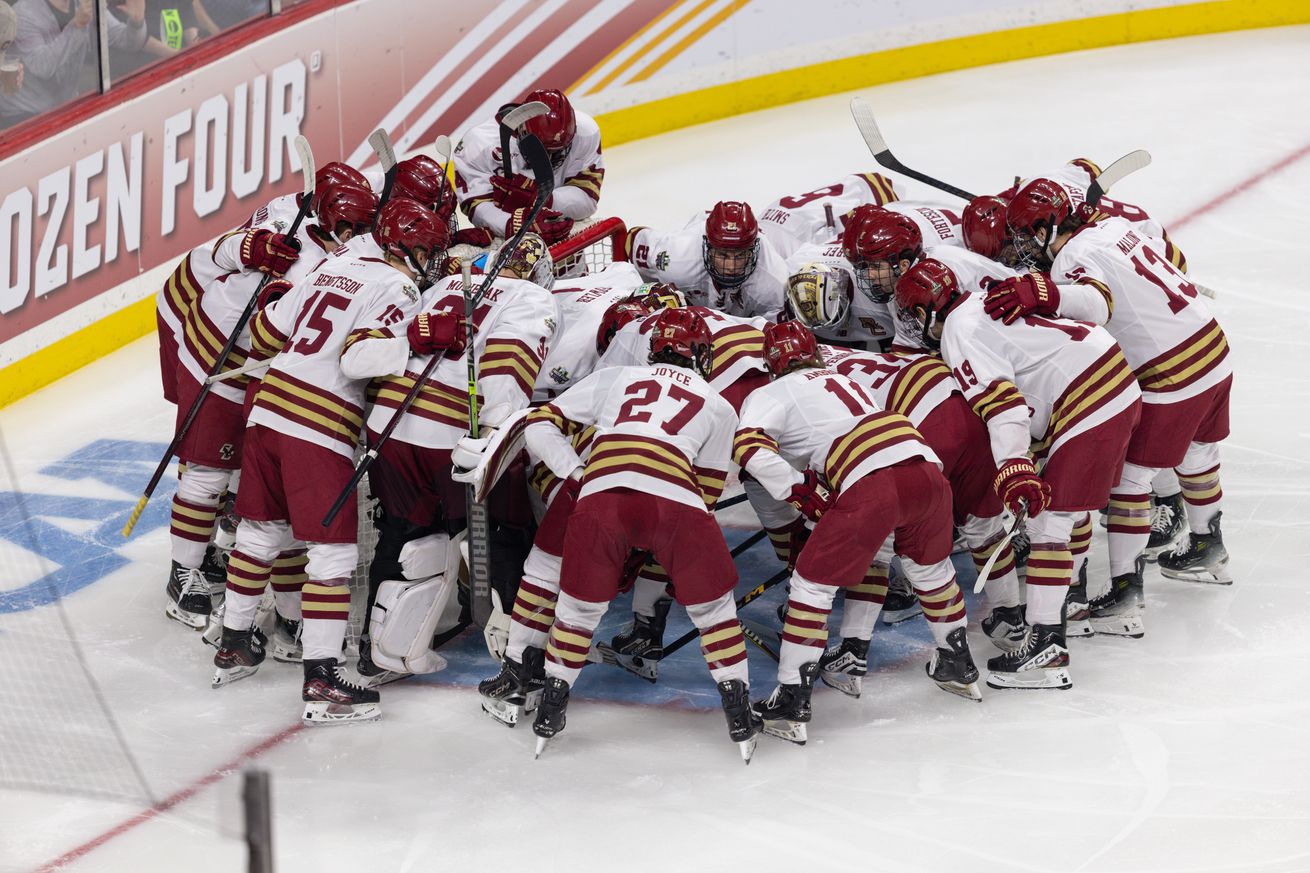
BC Interruption’s own college hockey ranking system
***Have I fallen behind on refreshing the rankings? Don’t hesitate to email me at grant dot salzano at gmail if you’d like the rankings updated!***
GRaNT Computer Rankings:
NCAA Division I Men’s Hockey
Welcome back to the 2024-2025 edition of the GRaNT Computer Rankings!
It stands for Grant’s Reasonable and Not Terrible Computer Rankings. We hope that you find the rating system itself as good as the name.
For anyone who has ever complained about RPI or the Pairwise, this is another system to stand alongside some of the deeper mathematical methods like KRACH or CHODR that give a more robust and methodologically sound ranking of teams.
The following involves math. Skip past this section if that makes you uncomfortable.
==========
The ranking system can be most simply described as KRACH for goal differential.
Instead of straight goal differential, though, what’s used is a sort of goal ratio, or, more accurately, the percentage of goals scored in a game (we’ll call it “G%”) by each team — for example, if Team A beats Team B by a score of 3-1, then Team A’s G% = 3 out of 4 goals, or 75%, and Team B’s G% = 1 out of 4 goals, or 25%.
Each team’s GRaNT rating is used to determine its expected G% against a given team. If Team A has a GRaNT rating of 300 and Team B has a GRaNT rating of 125, over the long run we would expect Team A to score 300/(300+125) ≈ 70.5% of the goals in games against Team B on average — something like a 2.8-1.2 or 3.5-1.5 final score.
The GRaNT rankings are determined by setting each team’s rating so that the sum of their expected G%’s against each of their opponents (calculated using each team’s rating as described in the previous paragraph) is equal to the sum of their actual G%’s against each of their opponents (the real-life results of the games that actually happened). A rating of 100 represents an “average” team.
Someone with an eagle eye might note that shutouts appear to cause a problem in this method of calculation. A team that wins 1-0 and a team that wins 5-0 will both have a G% of 1.000 for that game, even though a 5-0 win is clearly better. This is handled by doing the math on all of the games as a whole instead of individually.
For example, if Team A wins its two games 1-0 and 3-1, its combined G% will be 4 out of 5 goals = 80%, and if Team B wins its two games 5-0 and 3-1, its combined G% will be 8 out of 9 goals = 89%.
An added feature of this “G%” figure is that you have diminishing returns on blowouts. So, while winning a game 4-1 (80%) is a reasonable amount better than winning 3-1 (75%), winning a game 8-1 (89%) doesn’t really do that much for you compared to winning 7-1 (88%).
Lastly, each team is given a “phantom 1-1 tie” against an “average” team. This has no effect on the relative position of teams in the rankings, but allows the formula to be calculated properly (and prevents any issues for a team that might have played in only shutouts). KRACH’s formula does something similar.
==========
Since the formula is, by definition, calculated by determining what percentage of goals you should score in a game against a given team, we’ve also provided built-in calculator where you can select two teams and it will show what percentage of goals each team can be expected to score for each matchup.
Even better, using the number of goals each team would be projected to score against a team with the same rating as itself, we’re able to calculate actual score projections for every game. That calculator is included as well.
“RRSP,” short for “Round Robin Scoring Percentage,” is included in the rankings. This is similar to RRWP (Round Robin Winning Percentage) in KRACH, in that it tells you what percentage of goals a team would expect to score in they played in a “round robin” season, playing every other team exactly once.
The rankings are posted above for Men’s D-I college hockey and will be updated periodically each week. We hope you find our ranking system useful!